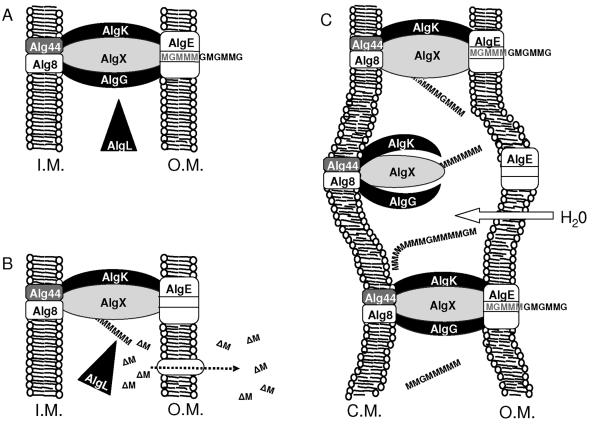FIG. 9.
Model for the function of AlgL, AlgG, AlgK, and AlgX. I.M., inner membrane; O.M., outer membrane. (A) Alginate is polymerized in the inner membrane and AlgK, AlgG, and AlgX form an alginate transport scaffold that surrounds the growing polymer and thereby prevents alginate accumulations in the periplasmic space and protects the growing alginate chain from AlgL-mediated polymer degradation. (B) When one of the alginate scaffold components is absent (in this case AlgG), the alginate polymer leaks into the periplasmic space and becomes depolymerized to dimers (ΔM) by AlgL (scavenging). These dimers leak out of the periplasmic space via channels in the outer membrane. (C) Absence of AlgL leads to accumulation of alginate in the periplasmic space. Influx of water to the periplasm maintains osmotic pressure but causes swelling of the periplasmic compartment. This expansion of the periplasm is toxic to the cells and disturbs periplasmic functions (e.g., polymerization and epimerization of alginate). This is indicated with the changed structure of the AlgK-AlgG-AlgX scaffold.

